Training to hike Kilimanjaro is as much about your physical endurance as it is about your mental stamina.
The former is important as you will be trekking between 5-10 miles a day for the duration of your climb (which can be up to 9 days if you have booked onto a long route - see my overview on Kilimanjaro routes). The ability to draw on physical reserves as your energy depletes is key.
However, if you read about or speak to high altitude climbers they will all say that your mental stamina is just as important as your physical endurance. This is definitely true of Kilimanjaro, particularly on summit night!
My Quick Takeaways:
Preparing to climb Mount Kilimanjaro requires a mix of physical fitness, mental preparation, and the right gear. Here’s how to start your Kilimanjaro training plan:
- Cardio Training: Build endurance with hiking, jogging, swimming, or cycling. Aim for at least three sessions per week, lasting 30–60 minutes each.
- Strength Conditioning: Focus on leg and core strength with squats, lunges, step-ups, and light weight training. Train two to three times per week.
- Mental Preparation: Climbing Kilimanjaro is as much a mental challenge as a physical one. Practice mindfulness, set realistic goals, and familiarise yourself with the demands of high-altitude trekking.
- Practice Hikes: Train by doing multi-day hikes with a loaded backpack, gradually increasing difficulty to mimic Kilimanjaro’s conditions.
- Acclimatisation: If possible, train at high altitudes or use an altitude training mask to help your body adjust to lower oxygen levels.
- Gear Testing: Wear your hiking boots, backpack, and trekking clothes during training to ensure comfort and prevent issues during the climb.
By following my structured training plan, you'll be better prepared for the challenges of Kilimanjaro and increase your chances of reaching the summit!
Ready for a deep dive? Let me explain how my personal Kilimanjaro training plan works.
Kilimanjaro Training Plan
Here are 4 things you can do to prepare and train for Mt Kilimanjaro.
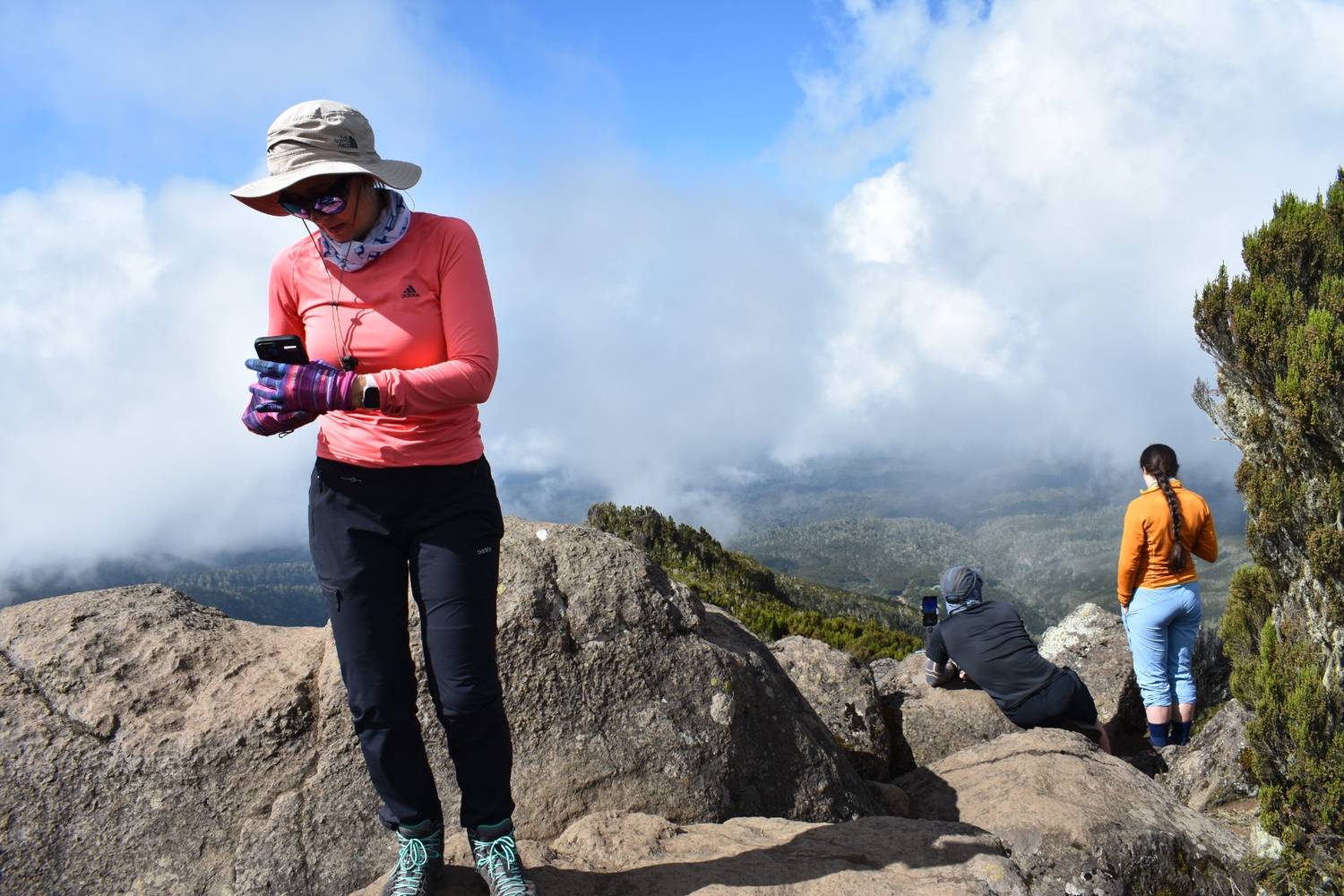
Being prepared for the very physical element of the hike will mean you get the most out of the experience.
Aerobic training
Aerobic training (also known as cardio) uses oxygen to adequately meet the energy demands of exercise via aerobic metabolism.
The types of exercise that use aerobic metabolism are generally light-to-moderate intensity activities like long-distance jogging, swimming, cycling and walking.
This differs from anaerobic exercise like high-intensity weight lifting and sprinting which uses anaerobic metabolism to supplement the aerobic system due to increased energy demands.
Aerobic exercise builds the cardiovascular system which is key when training to climb Kilimanjaro, as a strong cardiovascular system will help you process limited oxygen in a more efficient way.
There is a flip side though. The more fit you are, the harder and faster you can push yourself, and the quicker you think you can ascend Kili.
This is a huge mistake!
Going as slow as possible, even when you are on the lower reaches and feeling great, is key to your success on Kili.
You will hear your porters say Pole Pole, which means Slow Slow in Swahili. This is possibly the best advice you will get!
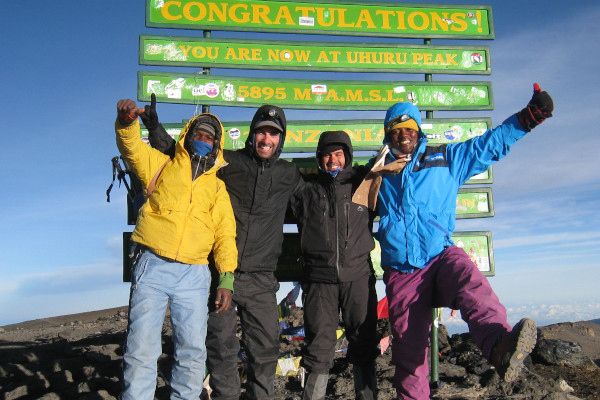
Plan your Kilimanjaro trek
Get a quote from my recommended local Kilimanjaro operator
Your body needs time to acclimatise to high altitude and a strong cardiovascular system can help but not if you have pushed yourself too hard.
A good recent example of how a strong cardiovascular system can trick one comes from an accomplished Australian marathon runner who collapsed at Stella Point because he had gone too fast early on in his hike.
If you are relatively unfit I recommend setting yourself a 3-6 month Kilimanjaro workout regime where you focus on long-distance walking / running (5-10 km at least three times a week).
You can do this on a gym treadmill but remember to set a consistent pace and vary the slope (a slight incline is best).
For relatively fit people who already undertake a fair share of cardiovascular exercise we recommend maintaining your Kilimanjaro training regime until 1 month before your climb.
At this point I recommend increasing the duration, but not intensity, of your exercises.
Strength Training
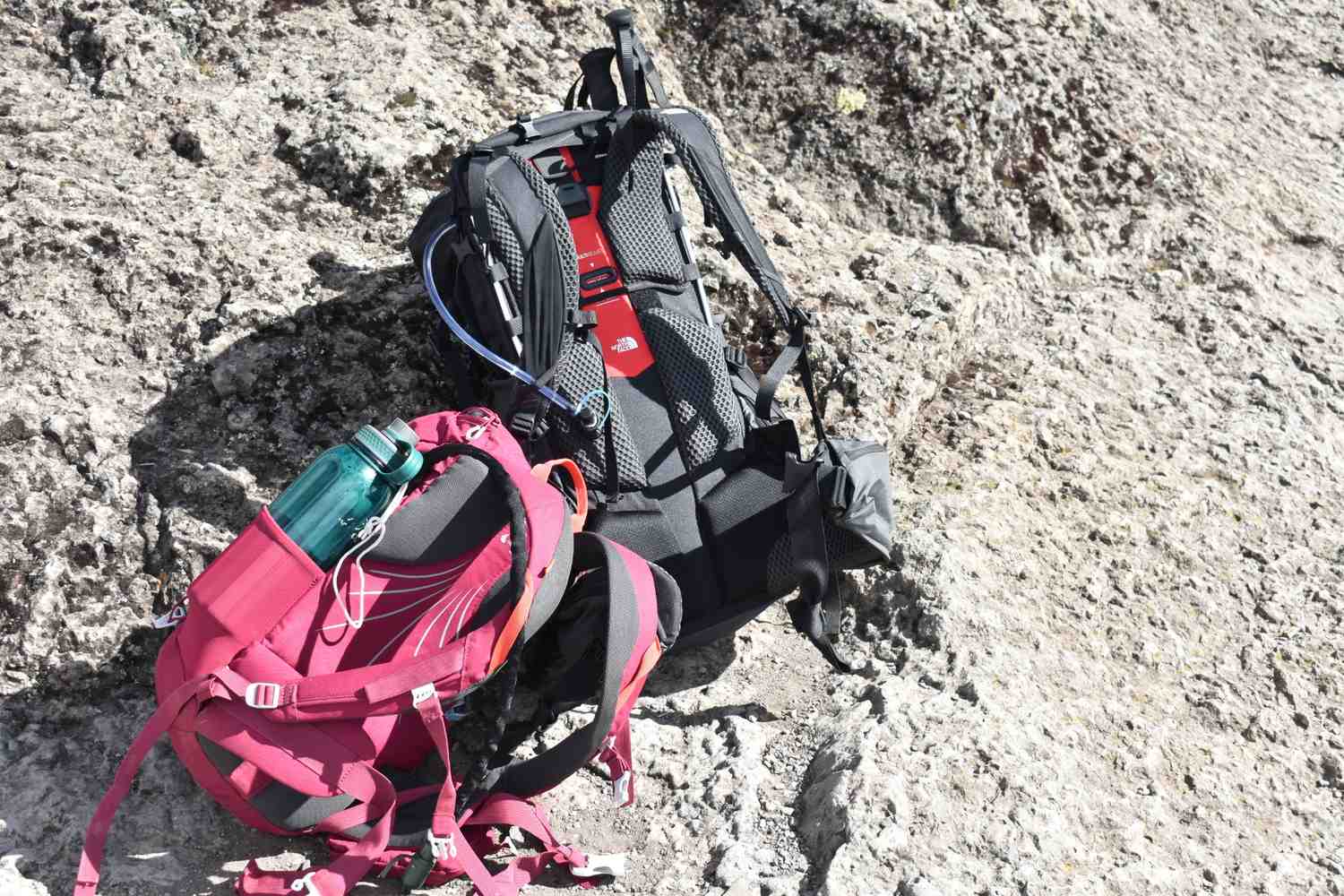
A small 20-30l daypack doesn't seem like much but, after hours each day, you really start to feel this weight. Strength training and hiking with a backpack helps you prepare.
In addition to aerobic exercise, you should also be doing light strength training, particularly for your legs, core and upper body.
In terms of your legs we suggest the following Kilimanjaro training exercises:
- Lunges
- Squats
- Front and Reverse Leg-curls (thigh muscle and hamstrings)
- Step aerobics
Building the strength of your core muscles (stomach and lower back) and upper shoulder muscles is also important as you will be carrying a lightweight pack for up to 6-7 hours a day. I recommend the following exercises:
- Sit-ups
- Kettle-bell rows / swings
- Shoulder presses
- Back and shoulder flies
Practice Hiking
Climbing Kilimanjaro is in fact just one long hike. The best way to prepare for a long hike is to do a few yourself.
I recommend doing at least two long-distance hikes (over 5 hours). If you can do back to back days that would be even better.
Doing a few practices hikes as part of your training to climb Mt Kilimanjaro has a few benefits:
- You get to experience what a 5 hour hike on difficult terrain feels like, going up and down (for most people going down is often more gruelling as your knees and joints can take a battering)
- You get to wear in your boots. There is nothing worse than arriving in Kilimanjaro with unworn-in boots. This can seriously stymie your summit attempt as you will get blisters and sore feet early on in your hike.
Plan your Kilimanjaro trek
Get a quote from my recommended local Kilimanjaro operator
Mental Stamina
So often the thing that gets climbers to the top of Kilimanjaro is their mental stamina.
Trust me, there will be times during the summit night that you will want to give up and go back down.
Being able to dig deep and pull on your mental reserves is so important.
The conditions play a huge role in your mental state. Summiting Kilimanjaro is a classic case of 'hope for the best and prepare for the worst'.
If you are already anticipating that it is going to be extremely tough, probably very windy and your going to be suffering from some form of altitude sickness plus lack of sleep, it can make it easier to accept and push through those challenges on summit night.
Thankfully there are activities to train your mental stamina.
Most require some form of pushing your body to the extreme, or to what you think your limits are, and then pushing through to accomplish your goal.
I recommend long-distance running, particularly marathons, but half marathons can do the same thing if you are not accustomed to running long distances.
This type of activity really requires one to draw on their mental reserves to get to the finish line.
Most people who run marathons will tell you the last mile was all mental. If you can get in that state of mind at least once before Kilimanjaro then you will be perfectly prepared for the final push up the slopes of Kibo.
Kilimanjaro Altitude Training
Many people ask, can I train for the altitude on Mt Kilimanjaro?
Generally, it is very difficult to effectively train for the altitude on Kilimanjaro.
You can certainly pre-acclimatise by climbing a lower altitude peak like Mount Meru, before attempting Kilimanjaro. And this will definitely help!
But training for high altitude at a low altitude using altitude training masks or specialist altitude training equipment is more complex, as the benefits of altitude training (i.e. acclimatisation) relies on highly complex anatomical processes.
A few sessions in an altitude mask might mimic the lower oxygen experience of high altitude hiking, but one really needs to sustain conditions at high altitude for acclimatisation to really take effect.
In other words, the benefits of altitude training wear off as soon as (or shortly after) you stop a training session.
In short, if you want to do Kilimanjaro altitude training, the best method is to pre-acclimatise on a lower peak like Mount Meru or Mount Kenya, directly before climbing Kilimanjaro.
How to train for Kilimanjaro
I truly believe most people – regardless of age or physical condition – can climb Kilimanjaro (see: can anyone hike Kilimanjaro).
All one needs to do is ensure their cardiovascular system is firing on all engines and that they have the mental strength to see the hike to the end.

Plan your Kilimanjaro trek
Get a quote from my recommended local Kilimanjaro operator
My Final Thoughts
And there you have it: Over and above the importance of training to climb Kilimanjaro is having the knowledge of how the body acclimatises to altitude. For this I recommend reading my guide to altitude sickness on Kilimanjaro.
Feel free to ask me any questions about how to train to climb Mt Kilimanjaro in the comments below.
More Kilimanjaro guides:

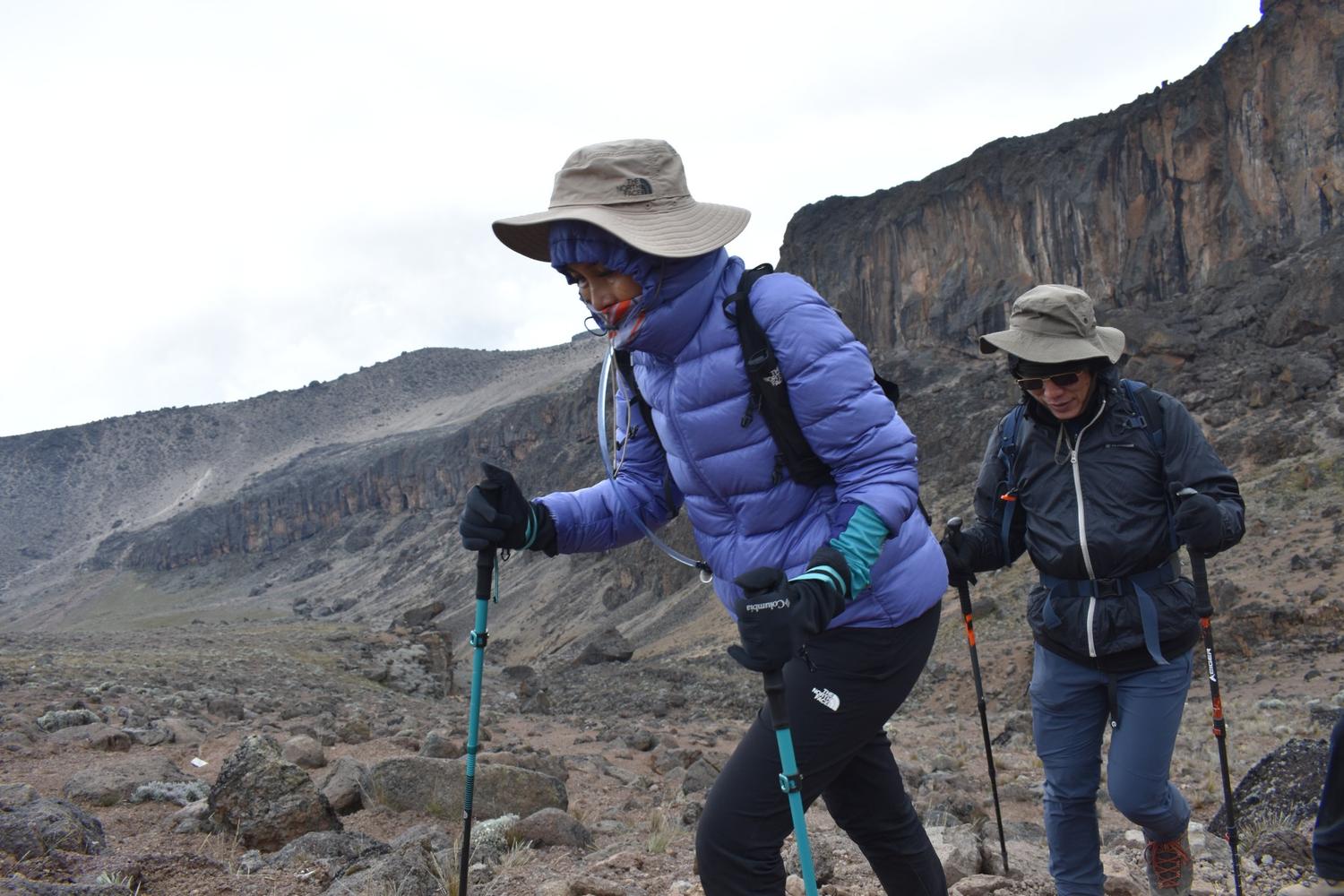
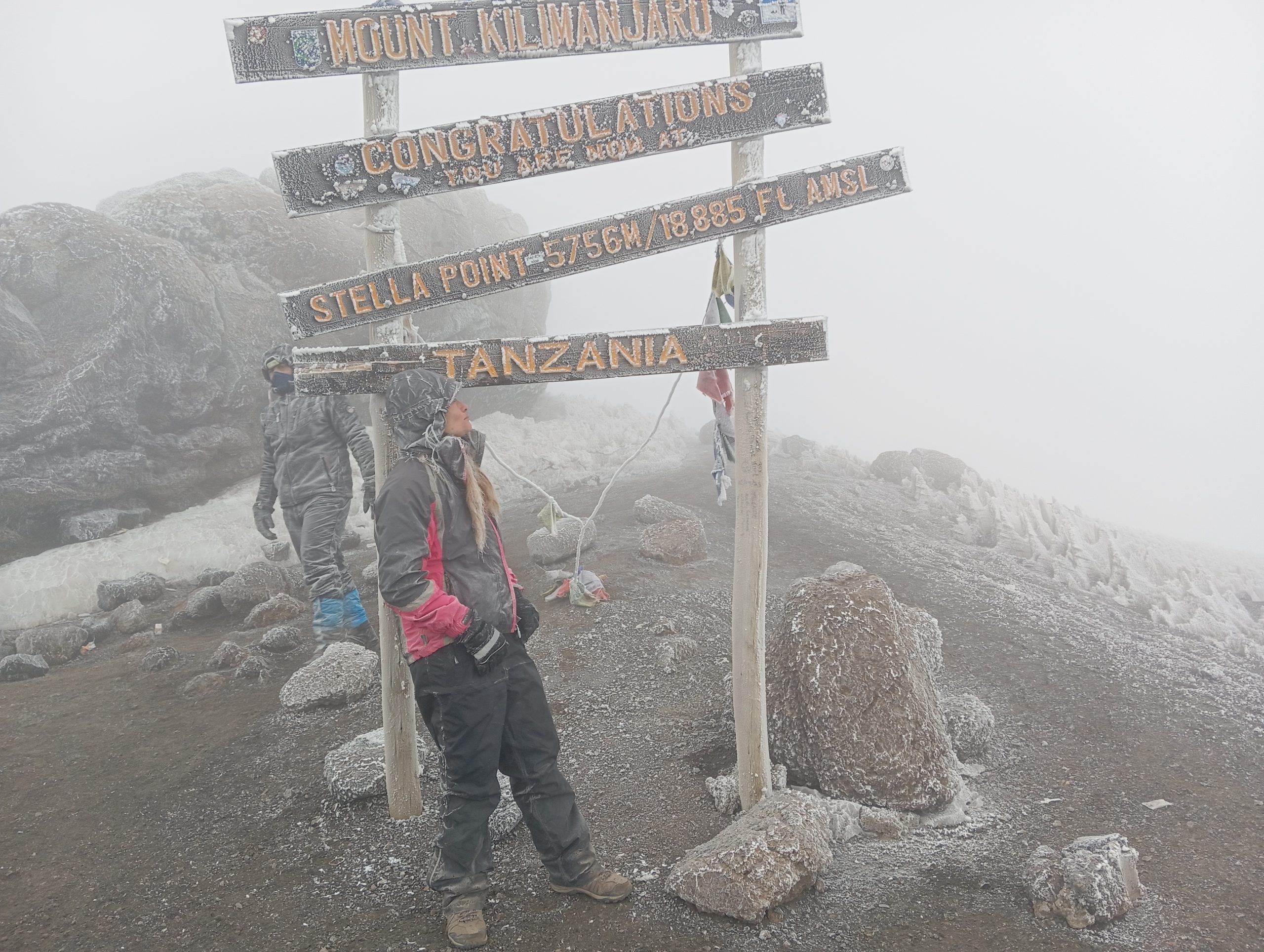
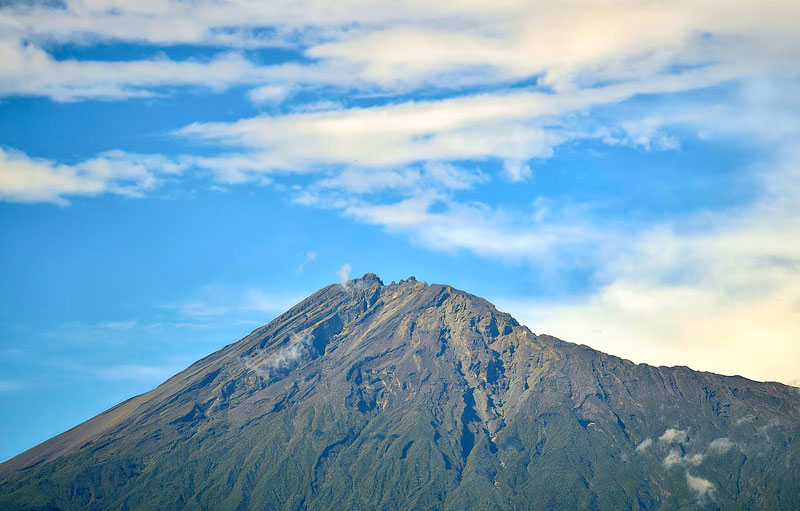
Hi myself and my husband intend hiking Kilimanjaro in January doing the Maranga route. He has sleep apnea and requires a c-pap machine to help him sleep at night. Also he has cardiac issues. Atrial fibrillation but is taking medication for this. Would you recommend we do this hike ?
Hi Brid, unfortunately I’m not qualified to answer this question. I recommend consulting with a doctor.
What exercises do you recommend for training the legs for coming down on Kilimanjaro
I recommend squats, lunges and step ups.
Do you think altitude sickness medication helps? When we toured Machu Picchu (hiked the large mt in the back) and hiked the rainbow mountains we took altitude sickness meds and they seemed to help. Do you think it’ll help enough to push through at my Kilimanjaro? My husband and I are distance runners I’m just very very nervous.
Hi Sarah, I recommend checking out this article on diamox: https://www.climbkilimanjaroguide.com/using-diamox-on-kilimanjaro/
Have an Eight day climb to Kili next February. Trying to find best way to prepare.
55 yo. Done some spartan races and run half marathons
Hi
Am doing kilmanjaro in September booked in march have been training since February
I have trained on hills and done munros and long walks but 3 weeks ago I sprained my knee on the way back from a munro and been resting my knee.
I am getting worried as I think am loosing my fitness and knee recovery is slow .
I have started to walk for an hour everyday on flat
Please advice
Hi Mark, I really appreciate your informative and user friendly website. I am thinking of climbing Kili in late June, and wanted to incorporate some weights to my walks and stair climbing training. Could you advice what is the standard weight of the daypack that we will be carrying up Kili? Will it include water and most of our personal belongings? Also for the summit push, do we get to offload most things at Barafu camp (assuming I take Lemosho route) and then pick them up again on the descent?
Also I found that my shoes are giving me toe blisters, should I get a bigger size or does it get better with "breaking in? "
Thank you for your advice
Hi Geraldine, glad you’re enjoying the site. The weight of your daypack can vary based on what you decide to carry but I would work on 5-7kg. It should get lighter throughout the day as you consume water. You can absolutely go lighter for summit night. Most tour operators only break camp at Barafu after you get back from the summit, so you can leave unnecessary items in your tent. In terms of your shoes, if they are giving you blisters then it’s possible that they are too tight and that breaking them in won’t help. I suggest doing a few walks in them to see if they ease up. Also, check that it is not your socks that are causing the blistering. Failing that, you may need to get a more comfortable pair. Hope this helps!
Hi Mark,
I am in pretty good shape now and my wife and I have booked a climb in August 2021 so around 9 months from now. I was planning on my normal training now through April which is geared for obstacle course racing (we enjoy Spartan racing and have two coming up before the end of April) After that we plan to switch gears to hiking.
I would welcome any comments or suggestions but do have one main question. What is your take on Altitude Training Systems? For example that offered by Altitude Tech?
By the way, I am 56 in case it influences your answer.
Thank you.
Giancarlo
Hi Giancarlo, I’m a little sceptical on altitude training systems, although I don’t have any specific experience with them so the science and efficacy may be solid. My understanding is that they are much more effective for improving performance under normal altitude conditions. In other words you train at altitude and then compete at lower altitudes to receive an endurance boost. I’m not sure they are very effective for high altitude mountaineering, especially if you have a gap between training and actually going to altitude. The body very quickly adapts to lower altitude and needs to start the acclimatisation process all over again if you take a break for a period of time and then go to altitude again. I recommend reading our acclimatisation guide here: https://www.climbkilimanjaroguide.com/acclimatization-kilimanjaro/
We at OCR Adaptive Athletes, in collaboration with World’s Highest OCR are inquiring which route would be best for Adaptive Athletes; some athletes use crutches and sticks and we have wheelchair users. We would have teams of volunteers for each adaptive athletes. Where is nearest Emergency hospital location? Is there a helicopter service to airlift if emergency situation happened?
Hi Andy, thanks for getting in touch. I would look at the Marangu or Rongai routes, as these avoid the Barranco Wall, which requires basic scrambling. There are hospitals and medical facilities in the foothills of Kilimanjaro near Arusha. Helicopter airlift is a possibility on Kilimanjaro but it is much more common to be carried off the mountain using a wheelbarrow-stretcher contraption.
Hello,
I am doing the Lemosho 8 day route this July. I am 68 kg and a female. I do yoga for an hour, 5 days a week…. what exercise would you suggest for me to be actually fit to climb Kili
Thanks
Good Day.
I m doing the machame 6 day route in 4 weeks from now, I have been working out with a trainer for the pass 9 weeks, 3-4 times a week mostly doing strength training, and also been hiking on table mountain every weekend between 10 and 20 km. Should this be sufficient? I also did 4 day consecutive hike covering 45km, and will do another 4 day hike the last week of dec. Should I be doing more cardio? I have only done short 5km runs once a week at most.
Regards
Mimi
Hi Mimi, you training regime sounds perfect, you should be in great shape for Kili. Best of luck!
I’m an asthmatic all my life and I want to climb experience this climb but after reading the issues that ca occur with breathing I’m afraid. Is this something I could train for?
Hi Julia, I recommend reading this article: https://www.climbkilimanjaroguide.com/climb-kilimanjaro-asthma-good-bad-idea/
We are planning a Kilimanjaro hike for this Oct. Just completed a hiking vacation in Colorado. We do 2 to 3 hour hikes at home in Minnesota- state parks usually. In Colorado we hiked the Flatop Mountain trail in Rocky Mountain National Park.
Roundtrip Length: 8.9 Miles -Trailhead Elevation: 9475 Feet-Total Elevation Gain: 2850 Feet
Highest Elevation: 12,324 Feet
The first day or two in Colo we were a bit short of breath but later in the trip we had no trouble with altitude sickness. We are thinking of training in Colo for several weeks prior to attempting Kilimanjaro. Prior to Colo training we would be doing long hikes at home coupled with training on bikes. We will be 70 and 66 and quite active. So, please let us know what you think we should be doing more of to be prepared. Thanks – Pat
Hi Pat, your training regime sounds perfect. The best type of training you can do is multi-day hiking, ideally at some elevation. In addition to this I would recommend a light gym routine to strengthen your legs and cardiovascular system. All the best!
Hi Mark,
We booked our Lemosho route trek in 8 days. We are a healthy and fit family of 4 (55,50,18,16) would you suggest to visit an MD before we go? I think we are fit enough to climb, but especially concerned about altitude sickness.
Hi Christianne, a visit to the GP is always a good idea but unfortunately he / she won’t be able to diagnose any altitude sickness risks. These are entirely dependent on how each of you respond to the altitude on the mountain. Check out this article to understand a bit more about altitude sickness and best practice to reduce your probability of getting it: https://www.climbkilimanjaroguide.com/acclimatization-kilimanjaro/
I’m a strong runner but not a great swimmer and often find swimming makes me quite breathless – I assume something to do with the hydrostatic pressure – is there something in this that I can utilise in my training to mimic coping with exertion at altitude?
Any specific swim drills or things I could be doing?
Thanks,
Hi Christy, I’m not aware of any benefit swimming can have for altitude training. The best training is to train at altitude if possible.
Hi. My husband and I are both in our late fifties and recently completed Everest Base Camp and Machu Picchu treks. 2019 we want to take our son back to Kili to support him with his second summit attempt as he developed Cerebral Oedema at Gilmans Point the first time and had to turn back. We are thinking to take the nine day Lemosho route mid-July. From what fellow trekkers are saying Kili is harder than EBC because the ascent is much quicker. We are fortunate to have great training opportunities not far from us in the Chilterns and we do this every Sunday. My main concern is summit night. Any pointers?
Hi Roshni, yeah, having trek extensively in Nepal and on Kilimanjaro, I would say Kili is harder due to the relatively rapid ascent profile. The 8 or 9 day Lemosho is a good route for acclimatisation so you are on the right track there. Apart from that I recommend reading this article, and following the best practice tips: https://www.climbkilimanjaroguide.com/acclimatization-kilimanjaro/. All the best!
Hi I can do short uphill climbs ben nevis summit 3 1/4 hrs snowdon and scafell less than 2 hrs have done yorkshire 3 peaks in less than 9 1/2 hrs on hot day do you think this will help do kil over several days
Hi Ian, yes, this shows you have the right fitness level. However, the impact of the altitude is difficult to determine until you have actually been up high i.e. over 3,500m. Also, Kilimanjaro is a multi-day hike, on average 7 days. So although the local hikes in the UK are great practice, they are generally not multi-day experiences. Having down all the hikes you mentioned I would say that you are in good shape for Kilimanjaro. Just make sure you take a longer route on the mountain to give yourself enough time to acclimatise. The 7 day Machame or 8 day Lemosho are great!
Hi,
I am a very unfit 47-year old that has brittle asthma and fibromyalgia and weigh a 100kg. Not that I’m going to let this put me off. I plan to climb next August 2018 apart from losing weight, what strategies can I put in place for my experience to be a positive one? I need to start to plan and fitness regime in order for me to achieve my goal, I would very much like your advice and tips no matter how candid they may be.
Thank you
kiki
Hi Kiki, the best advice I can give you is to get your boots on and hit the hills. You need to clock up as many hiking miles as possible. This will make you hiking fit. In addition it is worth starting a aerobic fitness regime from today. Hope this helps!
Hi. You mentioned the activity of running a marathon or a half marathon and it’s last mile to experience ‘digging deep’ for mental reserves as the same experience of summit night on Kili. Can you recommend an alternative to this to experience the same digging deep for mental reserves I can do as I’m not a runner. I’m climbing KiLi Lemosho 8 day at Christmas this year and am training by hiking in the peak district UK where I live. I’m in my mid 50s and female. Have walked up Fuji and general fortnightly hiking but nothing more. Can you also tell me what %incline on the treadmill is suitable for Kiki climbing and at what speed. Very kind regards
Hi Dee, it is difficult to describe similar activities that require strong mental stamina. I guess if you can imagine be very exhausted and perhaps on the edge of giving up, then you can get a sense of what the final push to the summit of Kilimanjaro is for many people. The ability to push that extra bit is in general required on a Kilimanjaro trek. Not for everyone, but for many people. Of course this needs to be balanced with the risk of severe altitude sickness. If you are not acclimatizing well then you will have to descend. My analogy with running a marathon works for many people as Kilimanjaro is definitely more of a marathon than a sprint. Initially you will take the trek day by day, and as you approach the summit it will be step by step. The combination of hiking for 7 or 8 days and the high altitude, mean that the final push can be mentally challenging, as much as it is physically challenging. Unfortunately there is nothing in the Peak District, or indeed the UK, that can give you a sense of the experience that comes with trekking at high altitude. Fuji would come close, but is still not high enough to provide an analogous experience to Kilimanjaro. My advice would be to try achieve peak fitness for your age, follow the golden acclimatisation rules, stay well hydrated and eat well on the trek and finally enjoy yourself. The trek is wonderful – enjoy each day. Don’t think too much about the summit until you are actual setting off on summit night. Assuming you have acclimatized well and have the grit and determination to make it to the top, then I’m confident that you will get there. As for working out on a treadmill, I prefer fast sprints to slow walking. The aim of fast sprints is to work your cardiovascular system as much as possible. I find walking on a treadmill (even at an incline), doesn’t get your heart going fast enough to really improve your cardiovascular performance. Hope this helps!
Hi , we are planning to climb Mt. Kili in Oct’16. Wanted some tips. How will the weather be in October. Will it be raining through out? If we walk upto 2 hours 11k, swim for 1 mm 3 times a week, cycle for 2 days a week-7-8km , can I see myself building endurance of need to work harder? Also, can we control do It without using Diamox? If yes , how do we control and monitor breathing at altitude , to avoid sickness. Thanks .
Hi Rashmi, October is generally a pretty good month weatherwise. Here is more detailed information: https://www.climbkilimanjaroguide.com/best-time-to-climb-kilimanjaro/. Your training regime sounds very good. I recommend using Diamox but I would first get clearance from your GP, here is some information on acclimatisation: https://www.climbkilimanjaroguide.com/acclimatization-kilimanjaro/
Hi, I am 58 and want to climb Kili in February 2017, I used to run 6 to 12km 3 to 4 times a week but haven’t done much since I moved to Entebbe, Uganda in Sept 2014. I still do some exercises indoors but no special training plan, I have some issues with my knees but I stretch a lot which keeps them going. Given the fact that running outside is limited so are gyms would walking for about 2 hours on the weekends be sufficient training to prepare me for the climb. Thanks.
Hi Lyne, Walking is in fact the best type of exercise training you can do for Kilimanjaro. The longer the walk the better as you want to really get used to being in your boots for multiple hours a day, preferably for a few days back to back. If you can get in a few weekend practice hikes that is a great way to harden off the joints and muscles and get Kili fit. Hope this helps!
Hi, I am planning to hike Kili in February 2017.
I am fit and do a lot of exercise. I was thinking of volunteer working in Tanzania for three weeks before my climb. Do you think this will be beneficial?
My only concern is, I won’t get much exercise in those three weeks, but I will try. Thanks.
Hi Melissa, I definitely think volunteering will be beneficial for you personal and for those you are helping, and will likely have neglible impact on your Kilimanjaro climb. From an acclimatisation perspective there certainly isn’t any benefit of spending time on the lower reaches and flatlands below Kilimanjaro. You might want to take a few days over one of the weekends and climb Mt. Meru, which would be super beneficial for your Kilimanjaro ascent!. Hope this helps!
Great suggestions!
I will be going in July next year (2016) and am extremely excited but also very anxious. I get bored quite easily and this will be my first big hiking experience.
I have been more or less regular with my fitness but may have to UP the cardio – since I have a lot of time to prepare, I think I will do okay – hopefully.
Naimeesha
Thanks Naimeesha!
I’m also planning on doing the Machume climb in July 2016, however, I only manage to push 1.5km in 15minutes over the treadmill.
Which route you planning on doing Naimeesha?
Hi there,
I’m 21 and climbing Kili in September. I think I’m relatively fit and have been doing walks primarily to make sure my boots are worn in, The main thing I am worried about is altitude sickness. I wasn’t sure if it was worth getting an altitude training mask or taking any of the medication recommended in preventing and treating altitude sickness.
Thanks
Hi Clare, altitude masks are still unproven in terms of performance enhancements for high altitude trekking / climbing. The jury’s out. We do howvere recommend taking diamox, as long as you get clearance from your GP. Read more about it here: https://www.climbkilimanjaroguide.com/using-diamox-on-kilimanjaro/
The resistance training mask does not help in any way beyond strength development for your diaphragm. The negative pressure generated by this strain also draws low pressure in the areas your lungs do not need it! If you want to really train for altitude, go to your local scuba shop, get certified with nitrox (a higher nitrogen percentage), and go swim around in a pool, take deep breaths and swim around to get the blood flowing. The research coming back on those masks is showing complete flop for altitude training.
@Davis. Diving nitrox uses a lower nitrogen percentage and higher oxygen percentage. Therefore, you can stay down for longer. It won’t help you coping with altitude sickness because you should get used to lower levels of oxygen.
Hi,
I am thinking of climbing kili in september and have not started training. I am 47 and not fit My main source of exercise in walking at the moment. can easily walk 20 km per week. My concern in I have sore knees from years of wear and tear from weight gain and early years of sport.
Do you think I could start training now two month out from the climb? I am also carrying a bit of extra weight!!
Would appreciate your thoughts.
Cheers
Annie
Hi Annie, Thanks for getting in touch and for your question. If you are thinking of climbing in September and you are not in the best of shape then I would definitely start training from today. As I mentioned in the article cardiovascular exercise is the best form of training for Kili. Brisk walking or a slow jog on a treadmill 3-4 times a week for 10-12 kms each time is what you should be aiming for. Starting out you can do shorter intervals (4-5 kms). On Kili you will be trekking upwards of 10 km every day with summit night and day being very long (close on 17 km and 10-15 hours of trekking). You will need to have the physical stamina as well as the mental strength to push yourself to the summit. I very much encourage you to do some practice hikes before departing to get the sense of trekking 5-7 hours a day. My main concern for you is not so much the going up, but the coming down, which is very tough on knees and joints. Descent from Uhuru Peak is steep, rapid and long – over 12 kms and 2,700 meters in altitude. You will want to use trekking poles which can reduce the impact on your joints by up to 20% coming down. See here for my recommendations – https://www.climbkilimanjaroguide.com/kilimanjaro-kit-list/kilimanjaro-gloves/
I believe most people can climb Kilimanjaro – regardless of age and physical shape – the challenge is really one of preparation and will. Make sure to be as best prepared physically and mentally before departing. Once you arrive in Kili make sure to pace yourself and conserve energy as much as you can. Summit night is a very slow and arduous experience. There will be moments where you will seriously question what you are doing. Your mind will be the first to give up – its mechanism of saving the body, but you will be surprised how far you can push your body until it really gives up. This doesn’t mean you should put your body in danger but does mean that you need to acutely listen to your body to understand how much further you can push it, it’s usually significantly further than the first few doubts that start cropping up in your mind. Finally, remember to have fun, enjoy the hike and amazing scenery. Getting to the top is only part of the journey and getting down safely should always be the priority. Happy to field any other questions. If you haven’t booked do drop me a line here and I’ll see what I can do to help: https://www.climbkilimanjaroguide.com/mount-kilimanjaro-tours/